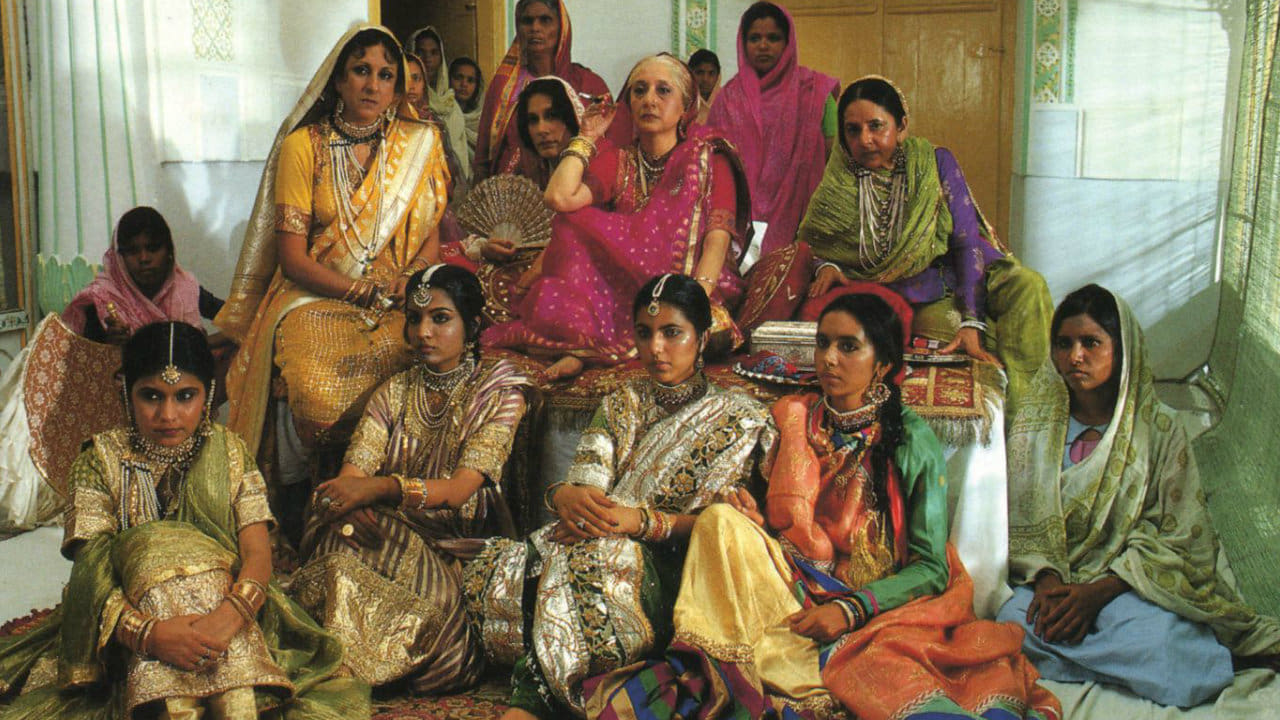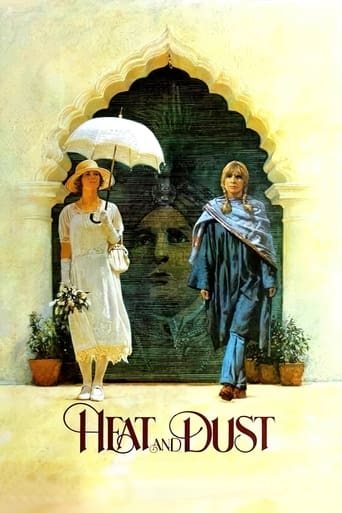

To me, this movie is perfection.
... View MoreThe greatest movie ever!
... View MorePlot so thin, it passes unnoticed.
... View MoreLoad of rubbish!!
... View MoreThis visually beautiful and deeply poignant story about love and desire in colonial India is one of Merchant Ivory's most overlooked and underrated films.Telling the somewhat similar stories of two women from two different time periods.Heat and Dust presents us with two different views of India from the prejudiced British Raj rule of the 1920's to the tourist and spiritual hot spot of the 1980's.It's based on a novel written by the third member of the Merchant Ivory team the screenwriter Ruth Prawer Jhabvala.As in their previous films in Heat and Dust we find the usual mix of exquisite period detail,memorable performances and a well crafted story.Beginning in the grandeur of 1920's India,Heat and Dust tells the story of young British woman Olivia Rivers(Greta Scacchi)who has joined her husband,The Assistant District Collector Douglas Rivers(Christopher Cazenove)out in the stifling heat of India.Although deeply in love with Douglas Olivia soon finds herself falling in love with the handsome local ruler The Nawab(Shashi Kapoor).The performance of Kapoor is the highlight of the film a brilliant blend of intellect,ruthless power and English manners,breeding and bearing.Intercut with Olivia's story is that of her sisters granddaughter Anne(Julie Christie)who is researching Olivia's story after becoming intrigued by the series of intimate and revealing letter she wrote to her sister concerning her time in India.Although both time periods are distinctively separate one man is present in both and that is the Nawab and Olivia's closest friend Harry Hamilton Paul(Nickolas Grace)who Anne interviews at his home in England in the 80's.He tells her more about the forbidden love affair that began between his two friends.As Anne travels to India to see the places mentioned in her relatives letters she begins a similar story of her own.She has an affair with and Indian and falls pregnant but also like Olivia she finds the strength to live independent,away from the restraints and expectations of the masses.One of the best supporting performances comes from the fantastic Madhur Jaffery as Begum Mussarat Jahan,the Nawab's mother.She holds court at the palace taking long drags from her elegant cigarette holder,scoffing at the English and their inabilities to adapt to the stifling climate,she's a perfect mix of bile,humour and anger.With beautiful costumes and locations Heat and Dust is one of those films the team made so easily and so well,a visual yearning for another time with different values and morals.In a word this is sheer perfection,and a highlight in the careers of the late(and much missed)Cazenove,Scacchi and Kapoor.
... View MoreExcellent film, maybe Merchant-Ivory's best. The story is wonderfully compelling. I love how the lives of the two British women are linked together. It's fascinating to see how differently they were treated by falling in love an Indian at different times in the same century. Great roles for Julie Christie and Greta Scaachi to play in this beautiful and poetic film. It's filled with great character parts for the English and Indian people surrounding them. Lots of food for thought, the film touches on the traditions and ways of life of both cultures showing how trapped people could be. There are some funny incidents when the cultures clash. The end brings both sadness and hope. A very underrated film that deserves to be seen and remembered!
... View MoreThis is an awesome movie, I am not writing a critical review, perhaps it is because I allow myself to fade into the film, I am transported to that time and place, I am not looking to find fault with this or that. I have just recently discovered this Ivory Merchant production, a flawless gem from 1983, interesting and amazing. I was enthralled and spellbound with the performance of the beautiful British actress primarily Greta Scacchi, similarly easy on the eye, an apt and good role for the lovely Julie Christie, with a host of other well known stars. Rating 6.6? I don't think so... the compelling authentic storyline of the British Raji in India in the 1920s, the music, the photography make it first class for me. I see no weaknesses as indicated by other reviewers. Obviously there is a mutual attraction between the British Officer's wife and the handsome, powerful Indian Prince, what other details need be explained? This DVD goes into my collection with the other Ivory Merchant masterpieces, Howards End, Room with a View and Remains of the Day. 24 yrs old, I am glad I found it in 2008 Comment from Malcolm in Toronto, 23rd February 2008
... View MoreBased on Ruth Prawer Jhabvala's Booker Prize winning novel of the same name, this film is not so much as being about India but rather using the country as an effective setting to tell a story spanning approximately 3 generations. Two story lines - one set in the past and one in the present - are juxtaposed and connected by the narrative of a young British woman who seeks to uncover the truth about an ancestor who once caused quite a scandal by having an affair with a local Nawab. The story lines examine the impact of Western and Indian cultures as lifestyles, social mores, and centuries of history clash and collide. A tapestry of India is woven, as seen through the eyes of the narrator, a foreigner, who sincerely attempts to grasp and interpret her observations. The story and the screenplay for this movie speak volumes about Ms. Jhabvala's extraordinary literary and cinematic talents as a social and historical commentator, storyteller, and screenwriter.
... View More